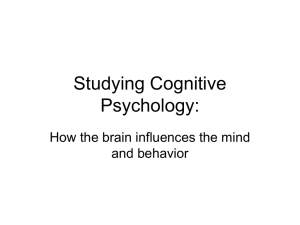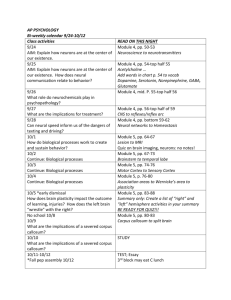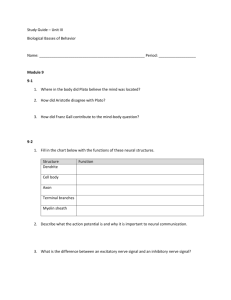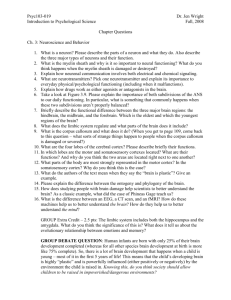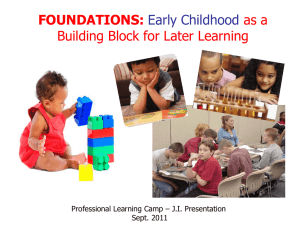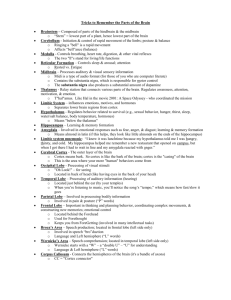What's a Brain? Part 2 - UCSD Cognitive Science
advertisement
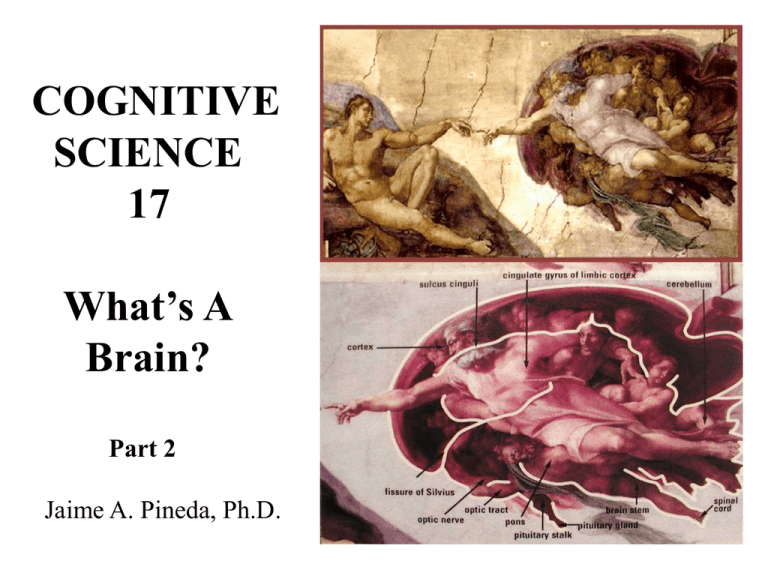
COGNITIVE SCIENCE 17 What’s A Brain? Part 2 Jaime A. Pineda, Ph.D. Brain Quiz • What did the right hemisphere say to the left hemisphere when they could not agree on anything? – “Let’s split” • What do you call a group of brains that form a singing group in school? – A glia club • What do you get when you cross a thought with a light? – A bright idea • What is the brain’s favorite television channel? – The Neural Network • What do neurons use to talk to each other? – Cell-ular phones • What did the Hollywood director say after making a movie about myelin? – “That’s a wrap” Principles of Brain Organization • Subdivided into 3 primary and 5 secondary regions – Forebrain • Telencephalon (endbrain) • Diencephalon (interbrain) – Midbrain • Mesencephalon – Hindbrain • Metencephalon • Myelencephalon Neural plate > neural tube Principles (cont.) • Brain contains an interconnected system of ventricles Principles (cont.) Brain contains a protective covering (meninges) Cerebral Spinal Fluid (CSF) Hydrocephalus Principles (cont.) • Brain is composed of two hemispheres connected by a set of fibers (corpus callosum) • 200-250 million fibers • Monotremes and marsupials do not have a corpus callosum • Agenesis and split brain patients Principles (cont.) • Cortex is subdivided into four major external lobes (plus the internal limbic lobe) Limbic lobe Found only in the medial view of the brain. Its major responsibilities include olfaction and emotions Principles (cont.) • Cortex is subdivided into areas of specialized function Principles (cont.) • Some areas of cortex (primarily sensory and motor areas) are topographically mapped. V1 (retinotopic) A1 (tonotopic) M1 (mototopic) S1 (somatotopic) Anterior-Posterior Organization Dorsal-Ventral Organization Left-Right Organization
